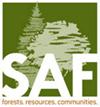木材期货市场价格波动模型:一种广义自回归条件异方差混合数据抽样方法
IF 1.5
4区 农林科学
Q2 FORESTRY
引用次数: 1
摘要
木材是美国最重要的森林产品之一。在2019冠状病毒病大流行的第一年,木材价格几乎翻了两番,波动达到创纪录水平。尽管市场专家指出了造成如此高价格波动的各种因素,但目前还没有得出确切的结论。利用广义自回归条件异方差混合数据抽样(GARCH-MIDAS)框架,本研究评估了木材价格波动的潜在驱动因素,预测指标包括谷歌趋势网络搜索指数、房屋开工率、美国木材产量和VIX指数,分别代表公众关注、住房需求、木材供应和宏观经济问题。我们发现,住房需求是木材价格波动的关键驱动因素,其次是公众关注。值得注意的是,美国木材供应和宏观经济问题在解释木材价格波动方面发挥了适度的作用。此外,利用住房需求变量预测木材价格的效果大大优于其他方法。市场参与者,包括木材厂、批发商和房屋建筑商可以从住房市场获得有价值的信息,以管理木材价格风险。研究启示:本研究结果可用于改善套期保值策略、设计期权定价公式及设定保证金要求。木材市场的参与者可以从住房市场获得木材市场价格风险管理的关键信息。对于土地所有者的森林管理决定,密切注意住房市场将提供关于木材采伐的适当时间的宝贵资料,因为住房市场的变化影响木材价格,从而间接影响对木材的需求,而木材是木材厂生产的最重要因素。本文章由计算机程序翻译,如有差异,请以英文原文为准。
Price Volatility Modeling for the Lumber Futures Market: A Generalized Autoregressive Conditional Heteroskedasticity-Mixed Data Sampling Approach
Lumber is one of the most essential forest products in the United States. During the first year of the COVID-19 pandemic, lumber prices almost quadrupled, and fluctuations reached record levels. Although market experts have pointed to various drivers of such high price volatility, no firm conclusions have been drawn yet. Using the generalized autoregressive conditional heteroskedasticity-mixed data sampling (GARCH-MIDAS) framework, this study assesses the potential drivers of lumber price volatility, with predictors including the Google Trends Web Search Index, housing starts, US lumber production quantity, and VIX index, representing public attention, housing demand, lumber supply, and macroeconomic concerns, respectively. We have found that housing demand is the key driver of lumber price volatility, followed by public attention. It is worth noting that US lumber supply and macroeconomic concerns have played a modest role in explaining lumber price volatility. Also, forecasting lumber price by using the housing demand variable substantially outperforms others. Market participants, including lumber mills, wholesalers, and home builders can get valuable information from the housing market to manage lumber price risk.
Study Implications: The findings of this study can be used to improve hedging strategies, design option pricing formulas, and setting margin requirements. Critical information for price risk management on the lumber market can be gained by lumber market participants from the housing market. For forest management decisions by landowners, giving close attention to housing market would provide valuable information on the appropriate time for timber harvesting, because changes in the housing market affect lumber price that will indirectly affect the demand for timber, which is the most important factor of production for lumber mills.
求助全文
通过发布文献求助,成功后即可免费获取论文全文。
去求助
来源期刊

Forest Science
农林科学-林学
CiteScore
2.80
自引率
7.10%
发文量
45
审稿时长
3 months
期刊介绍:
Forest Science is a peer-reviewed journal publishing fundamental and applied research that explores all aspects of natural and social sciences as they apply to the function and management of the forested ecosystems of the world. Topics include silviculture, forest management, biometrics, economics, entomology & pathology, fire & fuels management, forest ecology, genetics & tree improvement, geospatial technologies, harvesting & utilization, landscape ecology, operations research, forest policy, physiology, recreation, social sciences, soils & hydrology, and wildlife management.
Forest Science is published bimonthly in February, April, June, August, October, and December.
 求助内容:
求助内容: 应助结果提醒方式:
应助结果提醒方式:


